Types and varieties of tradescantia
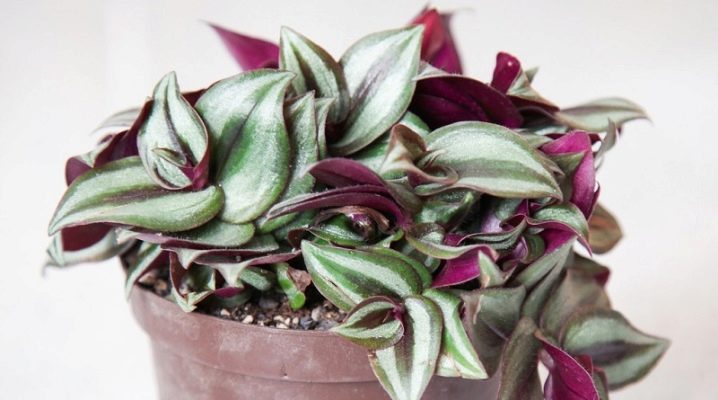
Tradescantia belongs to the Kommelinov family. Its native places are considered to be Latin America, although this plant can be found on other continents. Tradescantia is very popular as a home flower. Due to the flexibility of the shoots, it is used as an ampelous plant or as a green cover covering the soil.
This herbaceous flower is planted in flower beds, it also looks great as a decoration for alpine slides.
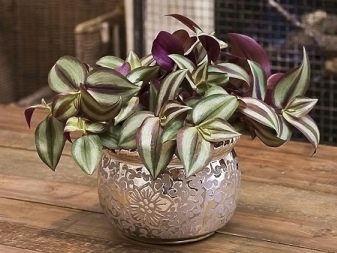
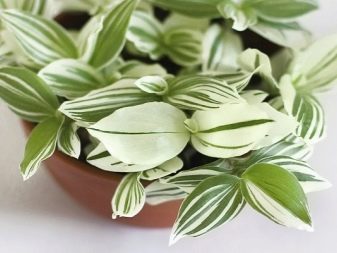
Description
Tradescantia is a perennial vine and has about a hundred varieties. The plant got to Europe thanks to the traveler John Tradescant, who was a gardener at the royal court of Great Britain. This unusual culture was named in his honor. Usually, tradescantia is grown as an indoor flower, but hybrids have been bred that take root well in open soil.
Colorful shoots of bright green color add a special charm to the plant. They fall beautifully in a luxurious cascade of pots. The leaf plates are even or grooved, their shape can be either lanceolate or oval. They grow on short petioles. Arcuate or parallel veins are clearly visible on the surface.
Because of the elongated intertwined shoots, Tradescantia is also called "woman's gossip."
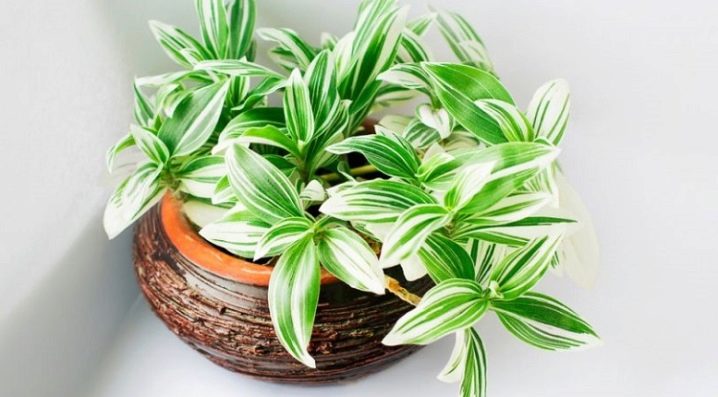
Plant varieties have a varied color range of leaf plates. There are specimens with both monochromatic green leaves and variegated, decorated with stripes of all sorts of shades. Tradescantia flowers are small, with three delicate petals. Their colors can be different: white, pink, blue or purple. Flowers are collected in a few apical inflorescences located in the axils of the leaf plates.
At home, not all varieties are pleasing with flowering. Mainly hybrids and garden species bloom. Tradescantia moisturizes the air space around it well, and also has the ability to neutralize pathogens near it and drown out electromagnetic rays from electrical appliances.
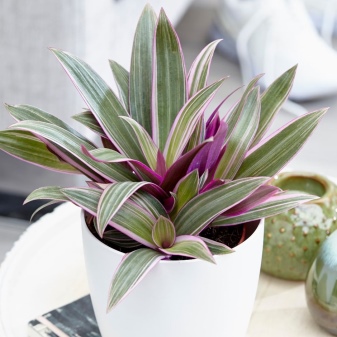

Popular varieties
Tradescantia is striking in the number of its varieties. Its variegated varieties with all kinds of colors are especially popular with florists. By types, the plant is divided into garden and indoor tradescantia. They differ from each other, respectively, by the place of cultivation and the necessary care. Sadovaya is distinguished by elongated shoots and bright, green foliage. Indoor, however, has many subspecies, which have differences in the color of the leaf plates, flowers and the size of the shoots.
Thanks to the work of breeders, Tradescantia has such a large number of hybrids that even experienced growers sometimes get lost in the names of its varieties.
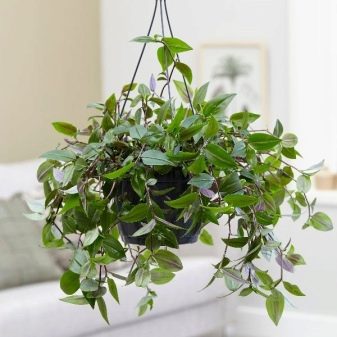
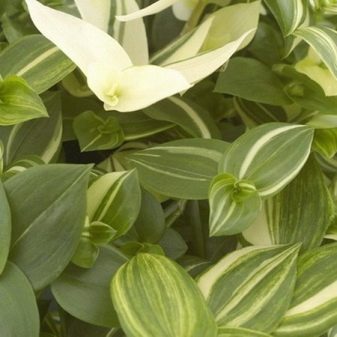
White-flowered
This species has bending stems with large oval leaves of a rich green color. The lower part of the leaf, as a rule, is slightly lighter than the outside. The edges of the sheet plates are pointed, and the surface is glossy, it can be monochromatic or covered with stripes. It blooms with small umbrella flowers of white or pale pink color, which are located on the upper part of the shoots. Famous varieties include:
- "Aurea" - yellow leaves are dotted with green stripes;
- "Tricolor" - the green leaf plate is painted with stripes of lilac, pink and white;
- Albovitata - the green background of the plates is covered with white stripes of different sizes.
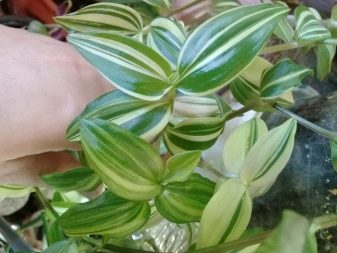
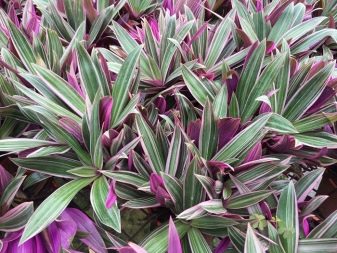
Virginia
It is characterized by straight, branchy shoots. Representatives of this species can reach 50-60 cm. The leaves are lanceolate, 20 cm long and 4 cm wide, the base is covered with thin, soft villi. Blooms with purple or pink flowers, forming dense umbrella-shaped inflorescences. The flowering time falls in mid-summer and can last for about 2 months. Has varieties with different shades of petals:
- Rubra - bright red
- Atrorubra - purple
- Coerulea - light blue
- Rosea - pale pink.
The flowering period is the second half of summer. This species is grown in garden plots as a flowering perennial. The plants are very hardy and tolerate the winter season well.
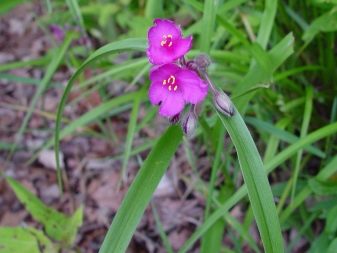
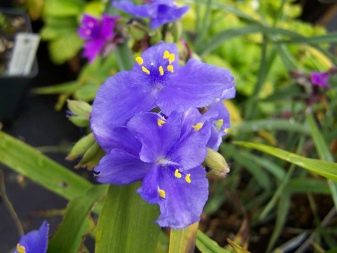
Anderson
This species includes hybrids bred by breeders; Virginia Tradescantia was taken as the basis. They have well-branched straight stems, reaching 80 cm, on which voluminous, slightly elongated leaves grow. Flowers with flat three petals come in blue, white, pink and purple hues. Tradescantia blooms all summer. Of the known varieties, one can distinguish:
- "Iris" - with flowers of an intense blue tone;
- "Leonora" - with violet-blue inflorescences;
- Osprey - with snow-white flowers.
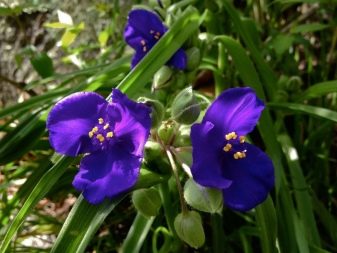
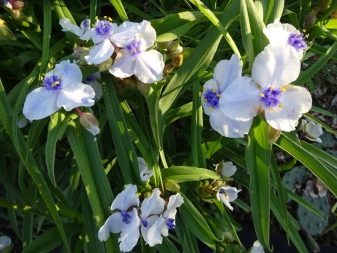
Blossfeld
Dense shoots have a burgundy green shell. Sessile leaf plates have a pointed apex and are rather large in size. The upper side is deep green with a soft reddish tint, and the lower side is dark purple, fleecy. In the axils of the leaves, three-petal inflorescences of a delicate lilac color bloom. The stamens and sepals are covered with long silvery filaments.
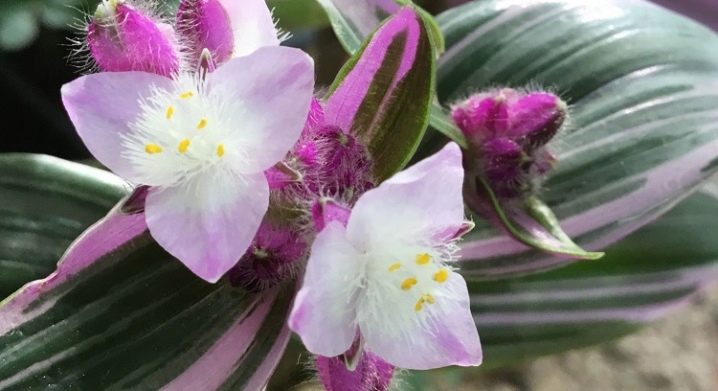
Riverine or myrtle-leaved
Thin, delicate shoots of purplish red. Bright green oval leaves are small, purple-purple on the back. Produces small white flowers with bright yellow stamens.
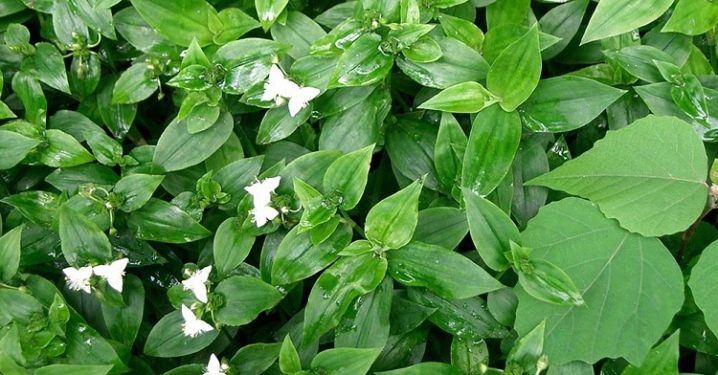
Tradescantia zebrina or zebra-like
Possesses creeping shoots with leaves of an original color. The upper side is two-tone: green stripes with a slight purple tint are interlayered with silvery ones. The lower surface of the leaf plate is purple-red. Blooms purple or purple.
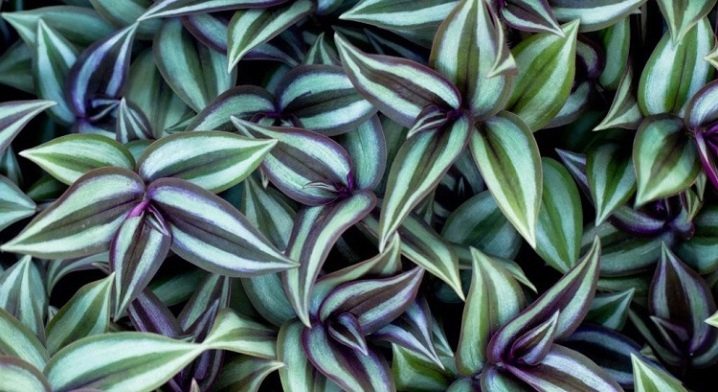
Purple
Quite branched shoots of a deep lilac shade, the same color and leaf plates, the lower part is fleecy. The flowers are miniature, with three petals of a delicate crimson tone.
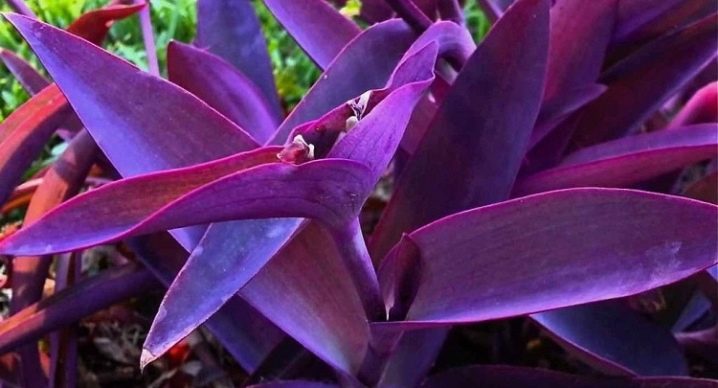
Small-leaved
A decorative type of Tradescantia, which is cultivated in indoor conditions. Thin brownish-purple shoots are abundantly strewn with tiny smooth leaves. They are dark green above and purple below.
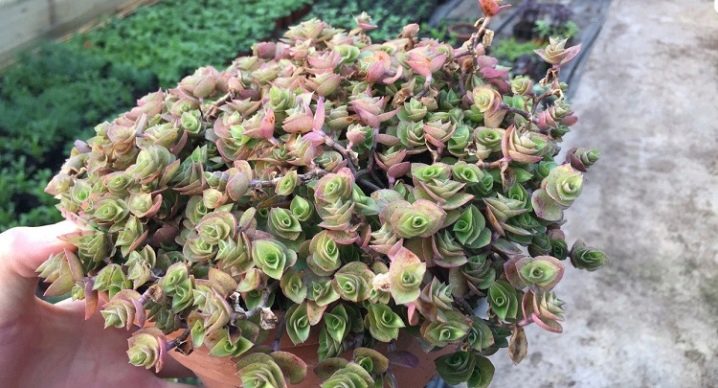
Veiled
It has a full, erect shoot, around which a rather strong rosette of lanceolate leaf platinum is formed. They have a glossy surface, the leaves are green on the front side, and pink-purple on the back. The flowering period is very short. Small white flowers form under a boat-like blanket. Because of this feature, the species also has the name "Moses' Boat".
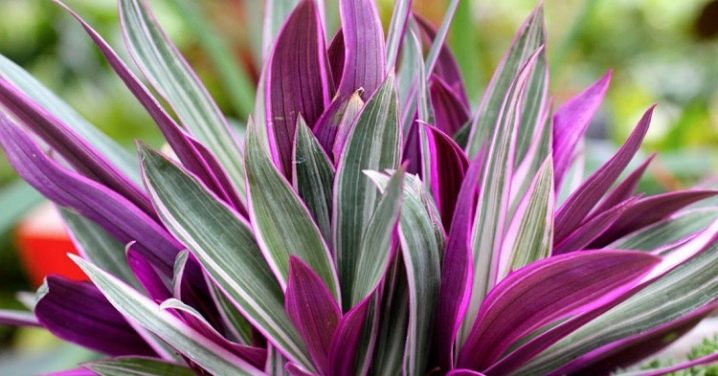
Scaphoid
Indoor plant with decorative creeping stems of green-purple hue. Their tips rise up and are covered with small oval, scaphoid leaf plates. The leaves are arranged very tightly among themselves and closely pressed to the shoots.
It belongs to highly decorative types and is often used in interior decorations.
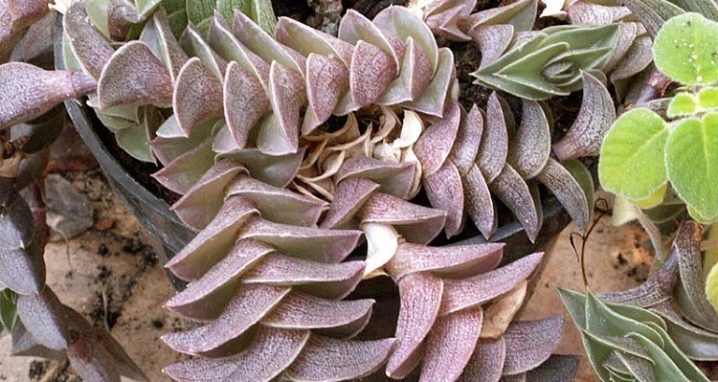
Lodges
This species is native to Australia. Its appearance is quite different from other relatives, since it does not develop elongated shoots. The leaf plates are large, olive green and have a silvery strip in the middle. In shape, they resemble an elongated oval and form a basal rosette from below.
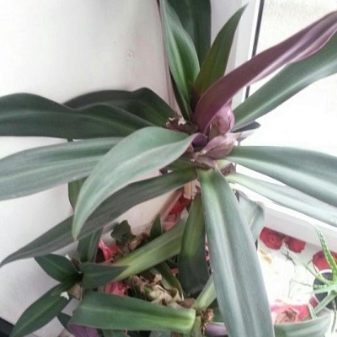
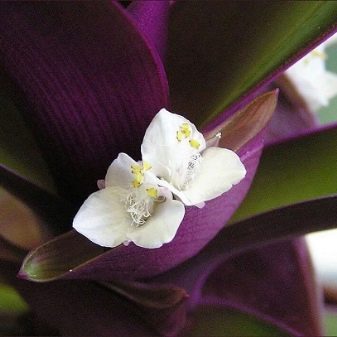
Sillamontana
Shoots and small leaves are abundantly covered with long whitish villi.They serve as a kind of protection against drought. Refers to garden species and feels good with a prolonged absence of watering, but since it is a thermophilic plant, it is dug up for the winter, transplanted into a container and kept in a warm room. Shoots grow vertically, but sink with age. In summer, single pink flowers with a lilac tint are formed on their tops.
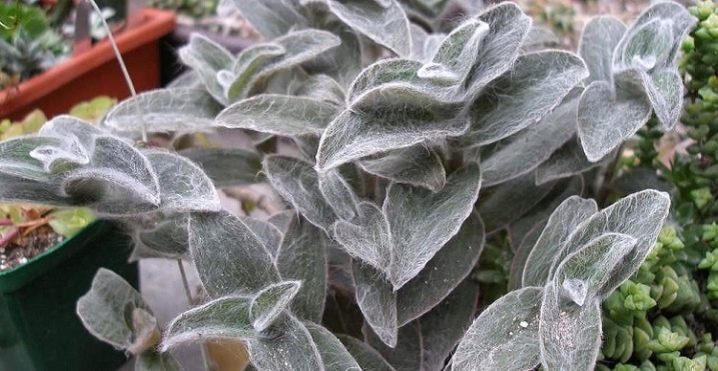
General rules for home care
Tradescantia is not a particularly demanding plant and does not make excessive demands on the care of the house. When the necessary conditions are created, the flower will delight for a long time with its luxurious shoots and delicate inflorescences.
- Lighting need bright, but no direct sunlight. Otherwise, the sheet plates will get burned. On the south side, the plant is shaded or placed in the back of the room. Variegated varieties are more capricious to lighting, because with its lack they lose their decorative multi-colored palette.
- Temperature in the spring and summer period, it is optimally comfortable at a level of +25 degrees. On especially hot days, it is necessary to often ventilate the room or take the plant out to fresh air. In winter, Tradescantia is suitable for lower temperatures, from +8 to +12 degrees. Under these conditions, the flower will be dormant, and the shoots will not stretch. Although it is possible to arrange wintering in a warm microclimate, then you need to use the backlight.
- Humidity is not a vital factor for tradescantia, it adjusts well to its usual level in the room. However, it reacts positively to irrigation, periodically the plant is rinsed from dust accumulated in the leaf axils.
- Watering in the warm period, abundant is organized, only the surface of the soil should dry out. After moistening, the remaining liquid accumulated in the pan is poured out. With a cool overwintering, it is worth significantly reducing the number of waterings, in order to avoid the appearance of fungus. The plant needs a few tablespoons of water per week.
- Top dressing tradescantia is carried out with liquid mineral or organic fertilizers. Organics are not suitable for variegated varieties. The flower is fed 2-3 times a month from April to August, in other periods, fertilization is not necessary.
- Transfer held once a year and carried over positively. During the process, old shoots are removed and, if necessary, the bush is divided. The transplant substrate should be fairly loose. You can buy ready-made soil or prepare it yourself. To do this, you need to mix 2 parts of deciduous land, 1 part of turf, 1 part of rotted foliage, half part of sand.


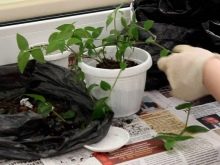
Diseases rarely affect this surprisingly hardy plant; in isolated cases, a fungus may appear if the flower is weakened. Of the parasites, Tradescantia is sometimes damaged by aphids. Garden plant species are a great addition to the design of flower beds, alpine slides or the banks of water bodies. The planted tradescantia looks great along the fences. The flower is not particularly pretentious for the neighborhood, it feels good among the different plants on the site.
- Location plants in the garden can be a little shaded or well lit, but always protected from drafts. You need to plant a plant in fertile, fed soil, preferably with sand and humus.
- Watering necessary frequent and generous, when the topsoil dries out. In winter, the plant does not need moisture.
- Fertilizers applied in the first half of spring in the form of mineral complexes. When buds appear, the flower is fed again.
- Hibernate the plant can be left in open soil if there are no subzero temperatures. Before that, the ground is covered with moss and peat, and the Tradescantia itself is covered with a film or a piece of non-woven material. In cold winters, it is better to dig up the plant, transplant it into a container and leave it indoors.
- Of pests slugs can hit the flower.They should be removed so as not to eat up the foliage.
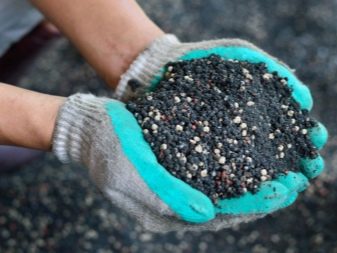

The plant propagates by seeds (used for garden varieties), cuttings and dividing the bush. The last two methods are used to cultivate indoor varieties. Seeds are planted in March in small containers with sandy-peat soil, moistened and covered with foil. Such greenhouses provide a temperature of + 20 degrees and diffused lighting. It is necessary to systematically moisten the substrate and remove condensation.
After 1-2 weeks, when shoots begin to appear, the film is removed. Slightly stronger sprouts are planted in well-warmed soil or in pots. When grafting, cut or broken upper parts of the shoots are used as planting material.
Tradescantia very quickly releases roots in water or in loose soil. After 7-10 days, the cuttings take root, and the plant begins to grow actively.

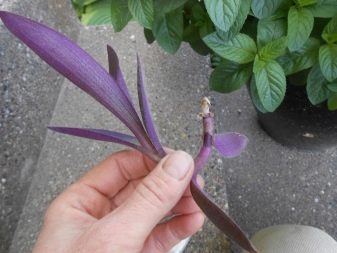
When transplanting, large bushes can be divided into a couple of parts. It is better to do it carefully with your hands, so you can avoid unnecessary damage. Cuts with a sharp blade are allowed, but all cuts must be sprinkled with chopped charcoal. Delenki are planted immediately so that the rhizome does not have time to dry out.
In order to avoid the loss of decorativeness due to rather rapid aging, experienced florists recommend rejuvenating Tradescantia every year. To do this, carry out a short pruning, pinching the shoots and transplanting into a new substrate. Growing such a plant at home, in addition to a spectacular and unusual flower, you can also get a healer, since Tradescantia has many healing properties.
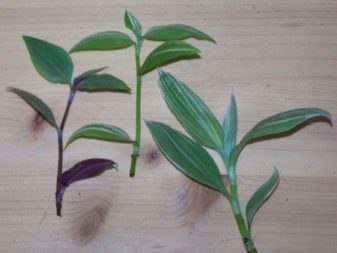
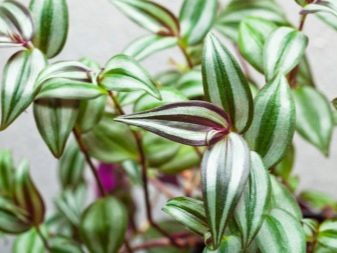
In the next video, you will find a good way to breed Tradescantia.


























The comment was sent successfully.